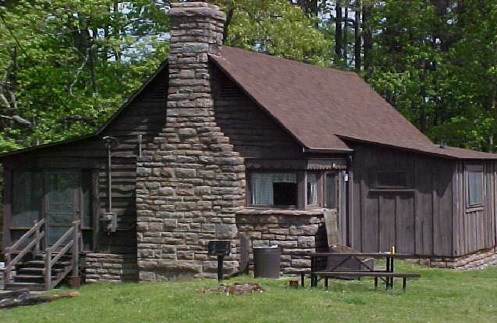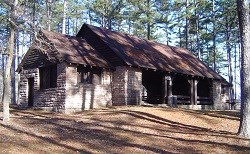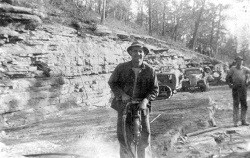
NPS photo The Great Depression was in full swing by 1933. At that time, approximately a quarter of the working population was unemployed and natural disasters were causing woes for farmers and many people had lost their homes. By 1933 the country had a new president, Franklin D. Roosevelt, whose main focus was to bring economic relief to the public. As a result, he initiated federal programs that were developed to assist in the country's financial recovery. As early as 1910 when he was appointed to the New York State committee on forests, fish and game, Roosevelt was concerned about the lack of policies for the development of land and water resources. In 1931as governor of New York, he proclaimed a Conservation Week in New York State to promote greater public awareness. Also while governor, Roosevelt worked for emergency legislation in an attempt to deal with growing unemployment in the state and set 10,000 unemployed people to work on reforestation. During the presidential campaign in 1932 Roosevelt presented the possibility of using a million men in forest work across the nation. 
Myra Reece The Emergency Conservation Work (ECW) Act, which was presented to Congress on March 21, 1933. Roosevelt himself first called the program the "Civilian Conservation Corps" and it was popularly known as the CCC. The name was officially changed to the Civilian Conservation Corps on July 28, 1937. This Act proposed to put 300,000 unemployed young men to work in the forests. The bill establishing the ECW was passed by Congress on March 31, 1933. Roosevelt issued immediate orders for the CCC to begin; having 250,000 men in the camps by June was the goal.
As Franklin Roosevelt intended, the benefits of economic and employment relief provided by the CCC was equaled by its preservation and development of the state's natural resources.
A very successful program resulted in the planting of millions of trees, the construction of countless bridges, trails and permanent structures still in use today. In Arkansas alone, the CCC erected 446 buildings, constructed 6,400 miles of road, built eight dams, laid 250 miles of fence, erected 86 lookout towers in forests, planted 19,463,745 trees, and strung 8,600 miles of telephone line in addition to their work in the development of recreational facilities. 
NPS Buffalo Point State Park established by the State of Arkansas in March, 1938 had a resident CCC camp by May of that year. Plans were to build roadways, cabins and a pavilion at the park in an effort to promote recreational activities and make the area more accessible to the local population, as well as tourists.
The Rustic style of architecture was dominant in the structures built by CCC camps. The Rustic style is characterized by the effort to harmonize with the natural setting using local indigenous materials; in Arkansas, natural stone and timber particularly. The pavilions, lodges, cabins, and other buildings constructed by the CCC made use of natural looking designs and to blend the rustic work into the natural setting. 
William Heiser Collection The structures at Buffalo Point were constructed between 1938 and 1945. The cabins were largely comprised of local stone, rough cut wood, and natural paint colors. The red rock, which is St. Joe limestone, was quarried from a site that can be seen today from the Indian Rockhouse hiking trail. This limestone was also used to construct native looking retaining walls, culverts and guardrails along the roadsides at Buffalo Point. In the end, a pavilion and the exteriors of six cabins and a lodge were finished by the CCC, but not all of the interiors were completed before the camp dissolved in 1942. World War II was underway by this time and all CCC camps were ordered to disband so that the country could focus on the war effort. Arkansas State Parks completed and operated the cabins as rental units starting in 1942. Annual park visitation in the early 1950s was approximately 25,000 and the cabins were in high demand. Despite the fact that the state park added four more cabins to the park in the 1960s, a campground was becoming a necessity. The campground's 83 camp sites, in addition to tent and group sites were also built using natural features and native stone to enhance the park, much like the construction design of the rustic cabins. 
CCC Yearbook 1938-1941 In 1988 the cabins were listed on the National Register of Historic Places due to the structures' historic and natural designs. Over the years, visitation to Buffalo National River has increased to approximately 1.5 million visitors per year. Buffalo Point offers one of most popular campgrounds in the park, with most sites occupied throughout the entire summer. While the National Park Service has ownership over the CCC cabins, they are run by a concessionaire that still rents the cabins out to visitors. The hard work and skill of the CCC is appreciated and utilized 75 years later. |
Last updated: November 11, 2020
